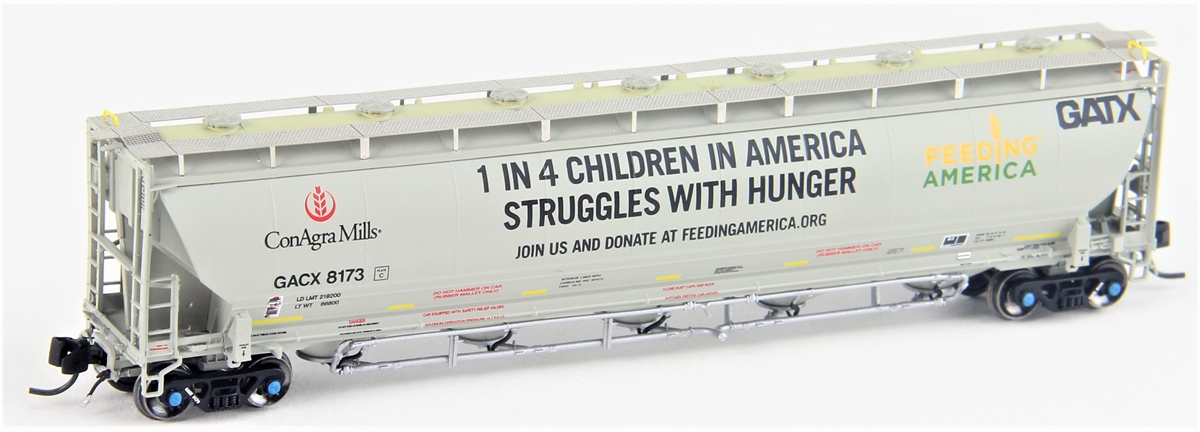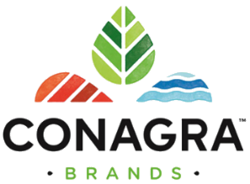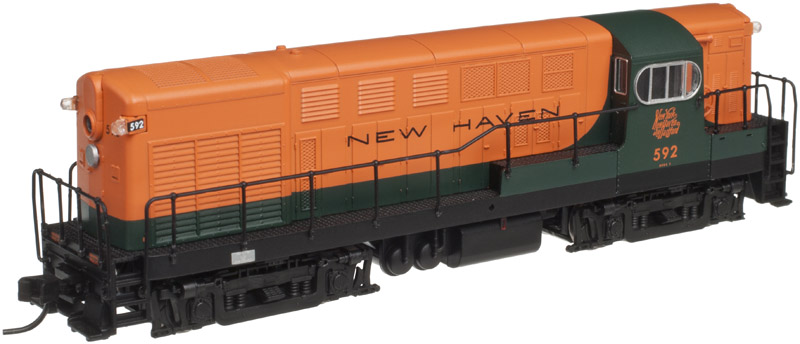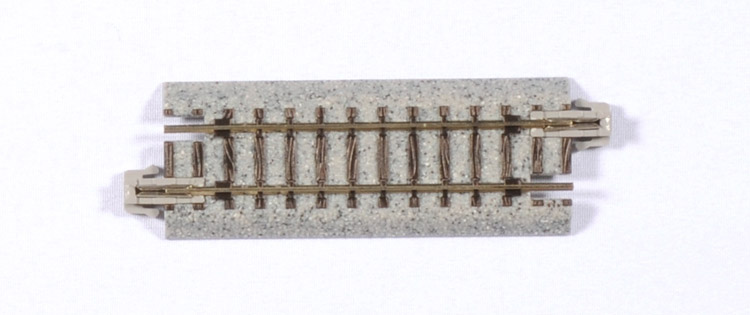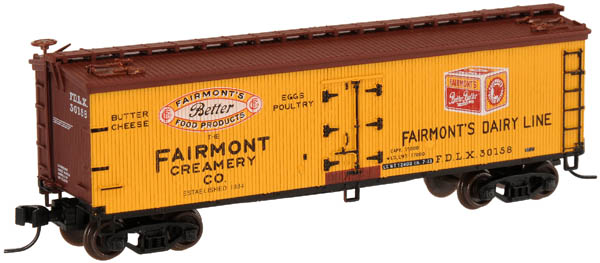Model Information: Introduced by BLMA in 2016, the first release became available for purchase in June of that year. Atlas acquired BLMA in late 2016, and began re-releasing this model in November of 2017.
These scale models feature injection-molded plastic bodies, etched metal roofwalks, wire cut levers, body-mounted knuckle couplers, trainline air hoses, metal wheels, Separately Applied Wire Cut Levers as well as crisply painted lettering.
These scale models feature injection-molded plastic bodies, etched metal roofwalks, wire cut levers, body-mounted knuckle couplers, trainline air hoses, metal wheels, Separately Applied Wire Cut Levers as well as crisply painted lettering.
Road Name History: Conagra Brands Inc. is a North American packaged foods company headquartered in Chicago, Illinois. Conagra makes and sells products under various brand names that are available in supermarkets, restaurants, and food service establishments.
Conagra was founded in 1919 by Frank Little and Alva Kinney, who brought together four grain mills as Nebraska Consolidated Mills (NCM) with its headquarters in Grand Island, Nebraska. The headquarters were moved to Omaha in 1922. The company ran at a profit until 1936, when Kinney retired. In 1940, the company began producing flour at its own mill, and in 1942 ventured into the livestock feed business. That year president R.S. Dickinson opened the company's first out-of-state facility in Alabama with a flour mill and animal feed plant.
After researching new uses for its flour, NCM funded the establishment of the Duncan Hines brand of cake mixes in 1951 as a way to market more flour. This venture was very successful, leading the company to its current place as the third largest flour miller in the U.S. However, this did not lead NCM to consider other food ventures, and instead it sold its assets in Duncan Hines to Procter & Gamble in 1956. As American households purchased more and more prepared and instant foods in the 1950s and 1960s, NCM chose not to expand into the businesses that used its flour, instead turning in the opposite direction and focusing more on raw foods like poultry and expanding its livestock feed business.
From Wikipedia
Conagra was founded in 1919 by Frank Little and Alva Kinney, who brought together four grain mills as Nebraska Consolidated Mills (NCM) with its headquarters in Grand Island, Nebraska. The headquarters were moved to Omaha in 1922. The company ran at a profit until 1936, when Kinney retired. In 1940, the company began producing flour at its own mill, and in 1942 ventured into the livestock feed business. That year president R.S. Dickinson opened the company's first out-of-state facility in Alabama with a flour mill and animal feed plant.
After researching new uses for its flour, NCM funded the establishment of the Duncan Hines brand of cake mixes in 1951 as a way to market more flour. This venture was very successful, leading the company to its current place as the third largest flour miller in the U.S. However, this did not lead NCM to consider other food ventures, and instead it sold its assets in Duncan Hines to Procter & Gamble in 1956. As American households purchased more and more prepared and instant foods in the 1950s and 1960s, NCM chose not to expand into the businesses that used its flour, instead turning in the opposite direction and focusing more on raw foods like poultry and expanding its livestock feed business.
From Wikipedia
Brand/Importer Information: In 1924 Stephan Schaffan, Sr. founded the Atlas Tool Company in Newark, New Jersey. In 1933 his son, Stephan Schaffan, Jr., came to work for his father at the age of sixteen. Steve Jr. built model airplanes as a hobby and frequented a local hobby shop. Being an enterprising young man, he would often ask the owner if there was anything he could do to earn some extra spending money. Tired of listening to his requests, the hobby-store owner threw some model railroad track parts his way and said, "Here, see if you can improve on this".
In those days, railroad modelers had to assemble and build everything from scratch. Steve Jr. created a "switch kit" which sold so well, that the entire family worked on them in the basement at night, while doing business as usual in the machine shop during the day.
Subsequently, Steve Jr. engineered the stapling of rail to fiber track, along with inventing the first practical rail joiner and pre-assembled turnouts and flexible track. All of these products, and more, helped to popularize model railroading and assisted in the creation of a mass-market hobby. The budding entrepreneur quickly outgrew the limitations of a basement and small garage operation. Realizing they could actually make a living selling track and related products, Steve and his father had the first factory built in Hillside, New Jersey at 413 Florence Avenue in 1947. On September 30, 1949, the Atlas Tool Company was officially incorporated as a New Jersey company.
In 1985, Steve was honored posthumously for his inventions by the Model Railroad Industry Association and was inducted into the Model Railroad Industry Hall of Fame in Baltimore, Maryland. In addition, Steve was nominated and entered into the National Model Railroad Association Pioneers of Model Railroading in 1995.
In the early 1990s, the Atlas Tool Company changed its name to Atlas Model Railroad Company, Inc.
In those days, railroad modelers had to assemble and build everything from scratch. Steve Jr. created a "switch kit" which sold so well, that the entire family worked on them in the basement at night, while doing business as usual in the machine shop during the day.
Subsequently, Steve Jr. engineered the stapling of rail to fiber track, along with inventing the first practical rail joiner and pre-assembled turnouts and flexible track. All of these products, and more, helped to popularize model railroading and assisted in the creation of a mass-market hobby. The budding entrepreneur quickly outgrew the limitations of a basement and small garage operation. Realizing they could actually make a living selling track and related products, Steve and his father had the first factory built in Hillside, New Jersey at 413 Florence Avenue in 1947. On September 30, 1949, the Atlas Tool Company was officially incorporated as a New Jersey company.
In 1985, Steve was honored posthumously for his inventions by the Model Railroad Industry Association and was inducted into the Model Railroad Industry Hall of Fame in Baltimore, Maryland. In addition, Steve was nominated and entered into the National Model Railroad Association Pioneers of Model Railroading in 1995.
In the early 1990s, the Atlas Tool Company changed its name to Atlas Model Railroad Company, Inc.
Item created by: gdm on 2017-11-16 12:09:05. Last edited by CMK on 2020-05-13 17:07:01
If you see errors or missing data in this entry, please feel free to log in and edit it. Anyone with a Gmail account can log in instantly.
If you see errors or missing data in this entry, please feel free to log in and edit it. Anyone with a Gmail account can log in instantly.


